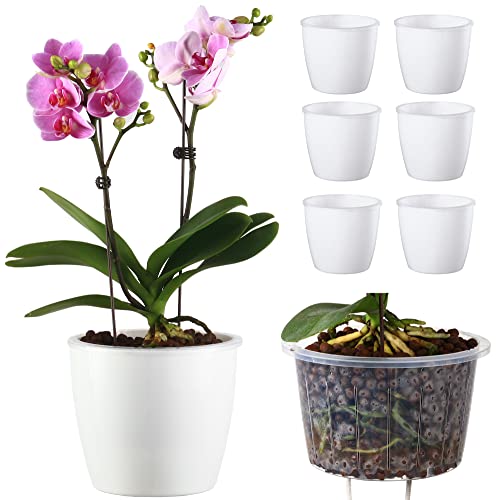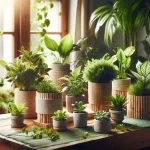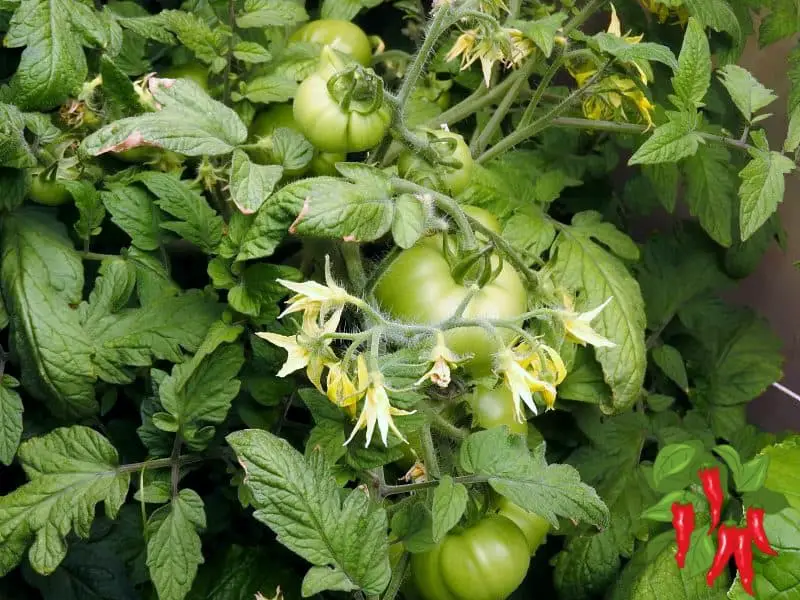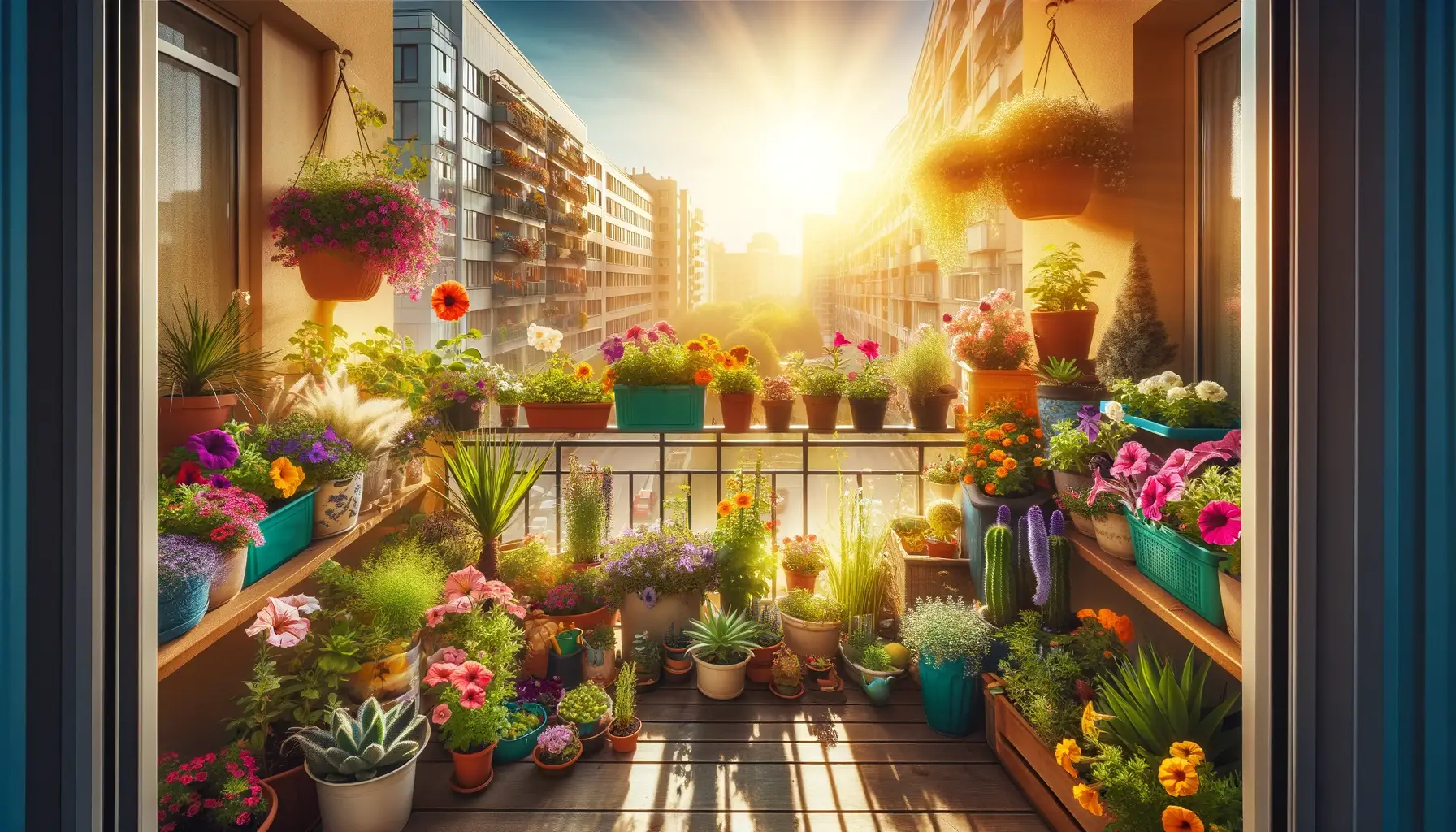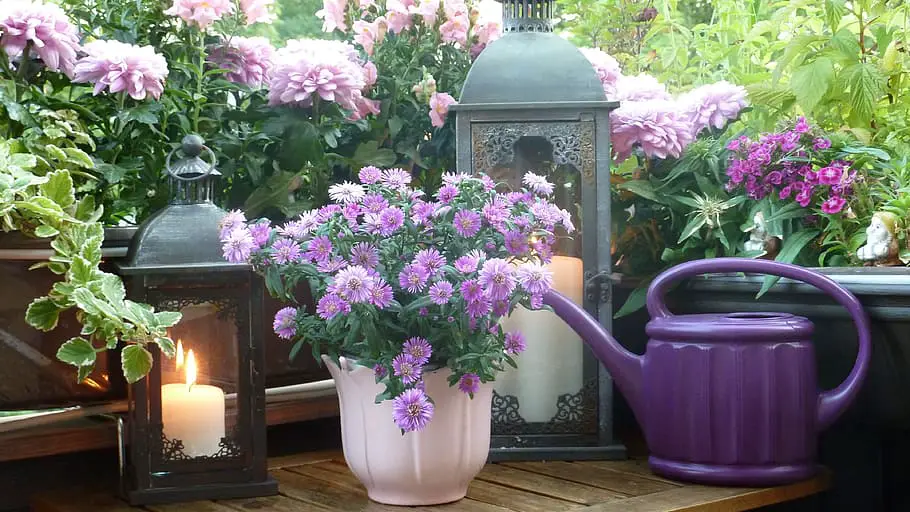
Dive into our apartment balcony garden ideas to transform your outdoor space into a green oasis. Fresh inspiration awaits, no matter the size!
Apartment balcony garden ideas can transform a small outdoor space into a lush retreat. Utilize vertical planters, choose compact furniture, and select hardy plants suited for balcony conditions. Incorporate lighting for ambiance and use multipurpose decor. No matter the balcony size, a touch of nature can make it feel spacious and serene
Key takeaway:
- Maximizing Your Space: Apartment balcony gardens can make the most of limited space by utilizing vertical gardening techniques. By growing plants vertically, you can create a lush garden without taking up much floor space.
- Understanding Restrictions: It is important to consider any weight restrictions your balcony may have when designing your garden. Additionally, you should take into account the microclimate of your balcony, including wind exposure, heat intensity, and shade, in order to choose suitable plants.
- Watering Techniques for a Balcony Garden: Balcony gardens may have unique watering needs. Consider using lightweight watering cans, collecting water overflow, using self-watering pots, and utilizing expandable garden hoses to ensure your plants receive adequate hydration.
Introduction to Apartment Balcony Garden Ideas
Ever looked out at your balcony and imagined it bursting with vibrant plants and charming decor?
With our apartment balcony garden ideas, you won’t have to daydream any longer.
We’re here to guide you through transforming that blank space into your very own green retreat, making every morning coffee or evening chill a memorable experience. Let’s bring those garden dreams to life!
Apartment Balcony Garden Ideas offers innovative ways to create a beautiful garden in a limited space.
These ideas cater to the unique needs of apartment dwellers who desire a green oasis.
With creative techniques like vertical gardening and container planting, apartment balconies can be transformed into vibrant and tranquil retreats.
By utilizing various plants, flowers, and herbs, residents can enjoy the benefits of nature even in a small outdoor space.
Moreover, these ideas provide opportunities for sustainable gardening practices, enhancing the urban environment while promoting a sense of well-being.
Ultimately, Balcony Garden Ideas provides the necessary inspiration and guidance to create a thriving garden oasis within the confines of a limited balcony area.
Maximizing Your Space
Apartment balcony garden ideas are all about maximizing limited space. They often involve using hanging planters, tiered shelves, and dwarf plant varieties. Integrating space-saving furniture and utilizing vertical space are key. These ideas aim to create a cozy, green sanctuary in urban settings, enhancing relaxation and connection to nature.
In my experience of apartment living, I’ve come to realize the immense potential that a balcony holds for creating a flourishing garden.
Maximizing the limited space is key, and in this section, I’ll share valuable insights on how to do just that.
We’ll explore the art of vertical gardening techniques, enabling you to stack and layer plants for optimal space utilization.
Additionally, we’ll delve into the secrets of designing for an expansive look, using clever tricks to create the illusion of a larger balcony garden.
So, let’s dive in and transform your apartment balcony into a green oasis!
Vertical Gardening Techniques
Some of the vertical gardening techniques that can be used in a balcony garden include:
- Wall-mounted planters: These are specially designed containers that can be attached to walls, allowing plants to grow vertically.
- Trellises and stakes: By using trellises and stakes, vining plants can be trained to grow upwards, saving space on the floor.
- Hanging baskets: Suspended from hooks or brackets, hanging baskets allow plants to hang down from above, utilizing vertical space effectively.
- Vertical shelving units: These units consist of multiple shelves where different plants can be placed, creating a vertical garden display.
- Pallet gardens: By attaching pallets vertically to a wall or fence, individual planters can be created on each slat, providing ample growing space.
By employing these vertical gardening techniques, apartment dwellers with limited balcony space can create lush and vibrant gardens without compromising on the number or variety of plants they wish to grow.
Making your apartment balcony garden look as expansive as the lies you tell about the size of your apartment.
Designing for an Expansive Look
To create a spacious and open appearance in your balcony garden, you can utilize various design techniques.
By implementing smart design strategies, such as using vertical gardening techniques and choosing the right plants, you can make your balcony garden look more expansive.
Adding vertical elements to your balcony garden is an effective way to maximize space.
By using hanging baskets or installing trellises and planters on the walls, you can create a visually appealing vertical garden.
This not only adds greenery but also gives the illusion of height and depth, making your balcony appear larger than it actually is.
Another way to achieve an expansive look is by carefully selecting the plants and arranging them in a way that creates a sense of depth.
Consider using plants with different heights and textures to add visual interest and depth to your balcony garden.
Grouping plants together in clusters can also help create a lush and vibrant atmosphere.
Additionally, incorporating mirrors or reflective surfaces strategically in your balcony garden can enhance the sense of space by reflecting light and creating an illusion of depth.
Placing mirrors on adjacent walls or using reflective mosaic tiles as accents can add a touch of elegance while visually expanding the area.
By integrating these design techniques into your apartment balcony garden, you can transform even a small space into a visually stunning oasis that appears much larger than it actually is.
These strategies help make the most of every inch of available space while creating an expansive look that will impress both you and your guests.
Understanding Restrictions: Weight, wind, and shade may limit your options, but your balcony garden will still bloom with creativity and resilience.
Understanding Restrictions
When it comes to creating an apartment balcony garden, understanding the restrictions that may exist is crucial.
One key aspect to consider is the weight restrictions imposed by the building.
According to the reference data, some apartments limit the maximum load that a balcony can support.
Additionally, it is essential to take into account the microclimate of your balcony.
Factors such as sunlight exposure, wind patterns, and temperature variations can greatly influence the success of your garden.
Let’s explore how these restrictions can impact your balcony gardening endeavors.
Weight Restrictions
These weight restrictions can determine the type and amount of items you can have on your balcony.
By incorporating vertical gardening techniques, such as utilizing wall space for hanging or stacking pots, you can maximize your space without exceeding weight limits.
Additionally, designing for an expansive look by using tall plants or trellises can create visual interest while keeping weight restrictions in mind.
When it comes to watering, using lightweight watering cans and self-watering pots can help manage the load on your balcony.
Lastly, choosing plants that are suitable for container gardening, such as herbs, vegetables, small trees, shrubs, annuals, perennials, succulents, tropical houseplants, flowering vines, and climbing plants can help ensure that you stay within the weight restrictions while still enjoying a vibrant balcony garden.
In understanding weight restrictions for a balcony garden, it is important to consider factors such as vertical gardening techniques and design choices that optimize space without exceeding weight limits.
Lightweight watering methods and appropriate plant selections further contribute to maintaining a balanced load on the balcony area.
By being mindful of weight restrictions when creating a balcony garden setup, ensures not only the safety of the structure but also the overall enjoyment of the space.
Microclimates make gardening a breeze, as long as you can handle wind, intense heat, and shady characters.
Considering the Microclimate
A key aspect of creating an apartment balcony garden is considering the unique microclimate.
This involves understanding the specific environmental conditions such as wind exposure, heat intensity, and shade.
These factors will influence the types of plants that can thrive in your balcony garden.
The wind exposure of your balcony can greatly impact plant growth and health. If your balcony is located in a windy area, it is important to choose plants that can withstand strong winds or provide windbreaks such as trellises or barriers.
Heat intensity is another factor to consider when selecting plants for your balcony garden.
Some balconies may receive direct sunlight for most of the day, leading to high temperatures that can be challenging for certain plants.
In this case, it is important to choose heat-tolerant plants or provide shade with umbrellas or awnings.
Dealing with shade is also a consideration when designing a balcony garden.
If your balcony receives limited sunlight due to surrounding buildings or structures, you will need to select shade-loving plants that can thrive in low-light conditions.
Overall, considering the microclimate of your balcony will help determine which plants will thrive in your space and ensure the success of your apartment balcony garden.
Pro Tip: Before selecting plants for your balcony garden, observe the conditions on your balcony throughout the day to accurately assess the microclimate and make informed plant choices.
Don’t worry about styling your hair, let the wind do it for you while your balcony garden flourishes.
Wind Exposure
Strong Winds in Apartment Balcony Gardens
To protect your plants from strong winds, it is essential to understand the wind exposure on your balcony.
By considering the direction and intensity of the wind, you can create an environment that minimizes damage and promotes healthy plant growth.
In a table format:
| Direction | Intensity | Impact on Plants |
|---|---|---|
| North | Strong | Can cause damage |
| South | Moderate | Some impact |
| East | Weak | Minimal effect |
| West | Strong | Can cause damage |
Additionally, it is important to position taller plants or windbreakers strategically to shield more delicate plants from excessive wind. This helps maintain a suitable microclimate for their development.
Did you know? Studies have shown that wind speeds exceeding 30 mph can severely affect plant growth and can even lead to stunted growth or death. https://libanswers.nybg.org/faq/223339
Get ready to turn up the heat in your apartment balcony garden by navigating the intensity of the sun’s rays.
Heat Intensity
To address heat intensity, it is crucial to choose plants that can tolerate and thrive in high temperatures.
Succulents and tropical houseplants are excellent options due to their ability to withstand heat.
These plants have adapted to hot climates and can handle the intense sunlight often experienced on a balcony.
In addition, providing shade for the balcony garden can help mitigate heat intensity.
This can be achieved by using umbrellas, and awnings, or installing shade fabric.
Creating shaded areas can protect plants from excessive sun exposure and maintain a more suitable temperature for their growth.
Furthermore, regular watering is essential to combat the effects of heat intensity.
Balcony gardens may require more frequent watering due to increased evaporation rates caused by high temperatures.
Using self-watering pots or utilizing expandable garden hoses can help ensure adequate hydration for the plants.
To make sure your balcony garden thrives despite the heat intensity, regularly monitor soil moisture levels and adjust watering frequency accordingly.
Additionally, consider applying mulch around plants to retain moisture and prevent overheating of the roots.
By taking these measures, you can create an enjoyable and vibrant balcony garden that thrives even in environments with high levels of heat intensity.
Don’t miss out on creating a beautiful oasis right outside your apartment!
Shade is a plant’s version of a parasol, so make sure they have a spot to cool off on your balcony oasis.
Dealing with Shade
Shade Management in Apartment Balcony Gardens
When it comes to dealing with shade in your apartment balcony garden, there are several strategies you can employ.
It is important to understand the different levels of shade and choose plants that can thrive in these conditions.
In order to maximize your space, consider using vertical gardening techniques such as installing trellises or hanging planters.
This will help you make the most of the available sunlight and create a visually appealing garden.
Furthermore, when selecting plants for your balcony garden, take into consideration their shade tolerance.
Some plants require more direct sunlight, while others can thrive in partial or full shade.
Choosing the right plants will ensure that they can adapt to the light conditions on your balcony.
A historical example of successful shade management can be found in the ancient Hanging Gardens of Babylon.
These impressive gardens were built around 600 B.C. and utilized terraces and arches to create shaded areas for plants to grow.
The innovative design allowed vegetation to flourish despite limited access to direct sunlight.
Watering a balcony garden can be a delicate dance, but with lightweight watering cans, water collection techniques, self-watering pots, and expandable garden hoses, you’ll be keeping your plants hydrated in style.
Watering Techniques for a Balcony Garden
When it comes to maintaining a flourishing balcony garden, understanding effective watering techniques is crucial.
In this part, I will delve into different strategies that can help you ensure that your plants receive the right amount of water to thrive.
Additionally, I will explore the water requirements and frequency needed for a successful balcony garden.
By implementing these watering techniques, you can provide your plants with a healthy environment for growth and enjoy a lush green space in your apartment.
Strategies for Watering a Balcony Garden
Watering a Balcony Garden:
Efficient Techniques to Keep Your Plants Thriving
Step 1: Lightweight Watering Cans – Opt for lightweight watering cans that are easy to carry and maneuver in small spaces.
This allows for precise watering without straining yourself or causing damage to the plants.
Step 2: Collecting Water Overflow – Place trays or saucers underneath your pots to collect excess water.
This prevents water from dripping onto the balcony below and ensures that your plants receive adequate drainage.
Step 3: Self-Watering Pots – Consider using self-watering pots, which have built-in reservoirs that supply water to the plants as needed.
This reduces the frequency of manual watering and helps maintain consistent moisture levels.
Step 4: Utilizing Expandable Garden Hoses – Invest in expandable garden hoses that can reach all areas of your balcony easily.
These hoses are lightweight, space-saving, and allow for efficient watering without any tangles or kinks.
To further enhance your watering strategies, it is important to consider factors such as plant water requirements, microclimatic conditions, and weight restrictions imposed by your balcony structure.
Did You Know? Utilizing self-watering pots in a balcony garden can significantly reduce water consumption while promoting healthy plant growth.
Lightweight watering cans: the closest thing to a personal trainer for your plants, giving them a refreshing workout while saving your arms from feeling like noodles.
Using Lightweight Watering Cans
Lightweight watering cans are a practical and efficient solution for maintaining a balcony garden.
They offer portability and ease of use, making watering tasks less cumbersome. Here are six points to consider when using lightweight watering cans:
Portability: The lightweight design of these watering cans makes them easy to transport around the balcony garden.
This allows for greater flexibility in reaching plants that may be placed in different areas.
Ergonomic Handle: The handle of lightweight watering cans is designed to provide a comfortable grip, minimizing strain on the hands and wrists during use. This ensures a more enjoyable watering experience.
Controlled Water Flow: These cans typically have a narrow spout, allowing for precise water distribution while preventing excessive runoff. This helps to avoid overwatering and ensures that each plant receives an adequate amount of water.
Durability: Despite being lightweight, many of these watering cans are made from durable materials such as plastic or metal alloys. This ensures their longevity even with regular use.
Easy Storage: Due to their compact size, lightweight watering cans can be conveniently stored when not in use without taking up much space on the balcony.
Aesthetics: Many lightweight watering cans come in stylish designs and vibrant colors, adding aesthetic appeal to the balcony garden.
In addition to these benefits, using lightweight watering cans also promotes water conservation by allowing for more controlled watering techniques.
When using lightweight watering cans in your balcony garden, consider purchasing ones with larger capacities if you have numerous plants or a larger space to cover.
To prevent spills, fill the can with water slowly and avoid overfilling it. Additionally, maintain regular cleaning of the can’s spout to prevent clogs and ensure proper water flow.
By following these suggestions and utilizing lightweight watering cans effectively, you can enhance your balcony gardening experience while keeping your plants adequately hydrated.
Overflowing with water-saving solutions, because every drop counts when it comes to your balcony garden.
Collecting Water Overflow
When it comes to managing the excess water in your balcony garden, there are various techniques you can employ.
By employing certain strategies, you can ensure that the water overflow is collected efficiently and effectively.
To better understand these techniques, let’s take a look at a table that highlights some practical ways of collecting water overflow in a balcony garden:
|
Now let’s explore some additional details about collecting water overflow in a balcony garden.
One important consideration is to ensure that the trays or saucers used for collecting water overflow are regularly checked and emptied to avoid stagnant water and potential mosquito breeding grounds.
Additionally, it is crucial to select adequately sized trays or saucers that can accommodate the amount of potential overflow based on the size of your plant containers.
To further optimize the collection of water overflow, consider elevating your plant containers slightly by using pot feet or placing them on top of bricks to allow better drainage and prevent sitting water.
Keep your plants hydrated and your laziness intact with self-watering pots – the ultimate plant parent hack!
Using Self-Watering Pots
Self-watering pots are a practical solution for watering your plants in a balcony garden.
These pots have a built-in water reservoir that allows the plants to draw water as needed, ensuring they receive consistent moisture.
Here is a simple 3-step guide to using self-watering pots:
- Fill the reservoir: Start by filling the reservoir of the self-watering pot with water. This can be done through a small opening or tube located on the side or bottom of the pot. Use caution not to overfill and flood the plants.
- Monitor water levels: Keep an eye on the water levels in the reservoir. As the plants draw water from it, you may need to top it up periodically. Pay attention to plant needs and adjust accordingly.
- Enjoy effortless watering: With self-watering pots, you can enjoy peace of mind knowing that your plants are getting the right amount of water without constant monitoring and manual watering.
It is worth noting that self-watering pots can help in conserving water by reducing runoff and evaporation.
Additionally, they can prevent overwatering, which is often detrimental to plant health.
In a similar vein, my friend Lisa decided to try using self-watering pots for her apartment balcony garden.
She found them incredibly convenient as she didn’t have to worry about watering her plants daily or asking someone for help when she was away.
The self-watering feature saved her time and ensured her plants thrived even when she was busy or traveling.
Expand your possibilities and make your watering woes disappear with expandable garden hoses.
Utilizing Expandable Garden Hoses
Using Expandable Garden Hoses to Maximize Balcony Garden Watering Efficiency
In today’s apartment balcony gardening, utilizing expandable garden hoses is a practical solution to maximize watering efficiency. Here are three reasons why:
- Versatility: Expandable garden hoses offer the flexibility to reach every corner of your balcony garden, allowing you to water your plants efficiently and effectively.
- Space-saving: These hoses are designed to expand when in use and contract when not in use, making them easy to store in confined spaces such as apartment balconies.
- Lightweight and durable: Expandable garden hoses are made from lightweight materials that are also durable, ensuring long-term usability without adding excessive weight.
To further enhance your watering routine for a balcony garden, consider these unique details:
The expandable garden hoses come with various nozzle options, allowing you to control the water flow and pressure according to your plant’s specific needs.
Moreover, these hoses are resistant to kinks and tangles, providing hassle-free usage.
Expandable garden hoses provide an efficient way to water plants in small spaces while maximizing convenience and ease of maintenance.
Keep your balcony garden hydrated with the right water requirements and frequency for your plants.
Water Requirements and Frequency
To ensure that your balcony garden thrives, it is important to understand the water requirements and frequency needed for your plants.
Different plants have varying water needs, and maintaining the right balance is crucial for their growth and productivity.
Here is a table outlining the water requirements and frequency for common plant types in a balcony garden:
| Plant Type | Water Requirements | Frequency |
|---|---|---|
| Herbs, Vegetables | Moderate to High | Every 1-2 days |
| Shrubs, Annuals | Moderate | Every 2-3 days |
| Succulents | Low | Every 5-7 days or when soil is dry |
| Flowering Vines | High | Every 1-2 days |
It’s important to note that these are general guidelines, and you should always monitor the moisture levels of your plants’ soil to determine their specific needs.
Factors such as temperature, sunlight exposure, and humidity can also impact watering frequency.
Now, let’s dive into an interesting fact about watering techniques in balcony gardens.
Did you know that self-watering pots are a popular choice among urban gardeners?
These innovative containers have built-in reservoirs that provide a constant supply of moisture to plants, reducing the need for frequent watering. This not only saves time but also helps maintain optimal hydration levels for your plants.
Get your green thumb ready because it’s time to pick the perfect plants for your balcony garden!
Choosing the Right Plants for a Balcony Garden
When it comes to apartment balcony gardens, choosing the right plants plays a crucial role in their success.
Whether you have limited space or ample room to work with, selecting the ideal plants for container gardening can make all the difference.
So, which plants should you consider? In this section, we will explore a variety of plant options for container gardening.
From vibrant flowers to aromatic herbs, we’ll discuss the diverse range of plants that thrive in a balcony garden setting,
So, let’s dive in and discover the perfect green companions for your balcony oasis.
Plant Options for Container Gardening
Container Gardening: Transforming your Balcony with Greenery
Looking to enhance your balcony with plants? Here are 5 Plant Options for Container Gardening:
- Herbs, Vegetables, and Small Trees
- Shrubs, Annuals, and Perennials
- Succulents and Tropical Houseplants
- Flowering Vines and Climbing Plants
These diverse plants offer a range of colors, scents, and textures that will bring life to your balcony garden.
Additionally, they are well-suited for container gardening due to their adaptability and minimal space requirements.
When it comes to selecting plants for container gardening, there are various factors to consider.
For instance, you should prioritize lightweight options that won’t strain the structural integrity of your balcony.
Moreover, choosing weather-resistant plants ensures their durability in different climatic conditions.
The cost-effectiveness and ease of watering are also vital considerations.
Plant options for container gardening provide versatility while adding aesthetic appeal to limited spaces.
By carefully selecting the right plants based on size, growing habits, and compatibility with your microclimate, you can create a thriving green oasis on your balcony.
History reveals that people have been utilizing containers for gardening purposes since ancient times.
From potted herbs in ancient Egypt to elaborate rooftop gardens in Renaissance Florence, container gardening has existed across cultures and centuries.
Today, it remains a popular choice for urban dwellers looking to connect with nature in limited spaces.
Go green with your apartment balcony garden by growing herbs, vegetables, and small trees, it’s like having a mini grocery store right outside your door.
Herbs, Vegetables, and Small Trees
In a balcony garden, you can choose from a variety of herbs, vegetables, and small trees to grow.
These plants not only add beauty to your space but also provide fresh ingredients for cooking and a touch of nature in an urban setting.
To help you make informed decisions for your balcony garden, here is a table showcasing some popular options:
| Plant | Description |
|---|---|
| Basil | A fragrant herb commonly used in Italian cuisine. |
| Cherry Tomato | Compact tomato plants that produce sweet cherry-sized tomatoes. |
| Lemon Tree | Dwarf lemon trees that can be grown in containers. |
These are just a few examples of the many plant options available for container gardening on your balcony.
Each plant has its own unique characteristics and care requirements.
When selecting plants for your balcony garden, it is important to consider factors such as sunlight exposure, temperature fluctuations, wind intensity, and weight restrictions imposed by your apartment building.
By choosing plants that are well-suited to your specific microclimate conditions, you can ensure their successful growth and longevity.
Did you know? Cherry tomatoes are known for their high vitamin C content and are a great source of antioxidants.
Shrubs, annuals, and perennials: the three musketeers of balcony gardening, bringing color and life to your tiny outdoor oasis.
Shrubs, Annuals, and Perennials
Shrubs, annuals, and perennials provide a diverse range of plant options for your balcony garden.
They offer various colors, textures, and growth patterns to enhance the aesthetic appeal of your space.
These plants can be easily grown in containers and are suitable for both small and large balconies.
• Shrubs: These are woody plants with multiple stems that add structure and visual interest to your balcony garden.
They come in a variety of sizes, shapes, and foliage types. Some popular shrubs for container gardening include boxwoods, dwarf varieties of hollies, and hydrangeas.
• Annuals: Annual plants complete their life cycle within one growing season. They are known for their vibrant blooms and continuous flowering throughout the season.
Annual flowers like petunias, marigolds, geraniums, and pansies can add a pop of color to your balcony garden.
• Perennials: Perennial plants live for more than two years and often come back year after year. They provide long-lasting beauty to your balcony garden with their foliage, flowers, or both. Some popular perennial options for container gardening include lavender, heuchera (coral bells), hostas, and ornamental grasses.
In addition to their visual appeal, shrubs, annuals, and perennials have several benefits for balcony gardens:
- Low maintenance: Many shrubs are low maintenance once established and require minimal pruning or care.
- Habitat creation: These plants attract beneficial insects like bees and butterflies which help with pollination.
- Privacy screening: Taller shrubs can act as a natural privacy screen on your balcony.
- Erosion control: The root systems of shrubs help prevent soil erosion in containers on windy balconies.
- Seasonal interest: By selecting a combination of annuals with different bloom times and perennials with varying foliage colors throughout the seasons.
- Flexibility: Shrubs, annuals, and perennials offer versatility in terms of sun or shade tolerance, allowing you to tailor your plant selection to your specific balcony conditions.
Shrubs, annuals, and perennials bring beauty and variety to a balcony garden.
With their diverse colors, textures, and growth habits, they enhance the aesthetic appeal of any space.
Consider incorporating these plants in your balcony garden to create a vibrant and inviting atmosphere.
True History: The use of shrubs, annuals, and perennials in container gardening has been practiced for centuries.
During the Victorian era, balcony gardens became popular among city dwellers who wanted to bring nature into their urban environments.
Shrubs were commonly used as focal points or privacy screens, while annuals provided bursts of color during the growing season.
Perennials added a sense of permanence to these gardens, with their ability to withstand winter temperatures and return year after year.
Today, the tradition continues as people embrace the beauty and versatility of shrubs, annuals, and perennials in their balcony gardens.
Bring a touch of the tropics to your apartment balcony with succulents and tropical houseplants that make your neighbors jealous of your mini paradise.
Succulents and Tropical Houseplants
Succulents and tropical houseplants, also known as arid and exotic foliage, offer a variety of options for balcony gardens.
- These plants thrive in sunny and warm environments, making them perfect for outdoor spaces.
- Succulents are known for their ability to store water in their leaves, while tropical houseplants add a lush and vibrant touch to the garden.
- Both types of plants require minimal care and can withstand the fluctuating temperatures often experienced on balconies.
As you explore different plant options for your balcony garden, consider incorporating succulents and tropical houseplants to create a unique and visually appealing space.
Pro Tip: When selecting succulents and tropical houseplants, be sure to choose varieties that are well-suited for your specific microclimate conditions.
Give your balcony a touch of romance with flowering vines and climbing plants – they’ll make your neighbors green with envy.
Flowering Vines and Climbing Plants
• They create a stunning visual display: Flowering Vines and Climbing Plants add a touch of vibrancy with their colorful blooms, transforming your balcony into a captivating oasis.
• They utilize space efficiently: These plants grow vertically, saving valuable floor space on your balcony. By utilizing walls and railings, they maximize the available area for other elements in your garden.
• They provide privacy and shade: Flowering Vines and Climbing Plants can be trained to form dense foliage that acts as a natural partition, providing privacy from neighboring balconies or blocking out the harsh sunlight.
• Additionally, certain varieties of Flowering Vines and Climbing Plants have unique characteristics such as fragrant flowers or attractive foliage patterns. These features add extra appeal to your balcony garden, making it a delightful space to relax and unwind.
Once upon a time in a bustling city, there was a small apartment with a tiny balcony.
The occupants dreamt of having their own oasis amidst the concrete jungle.
With determination, they transformed their balcony into a haven adorned with lush Flowering Vines and Climbing Plants.
The sight of vibrant blossoms winding up the railings brought joy to their hearts every day.
It became a place where they could escape the bustling city life and find solace in nature’s embrace.
This story is an inspiration for all those who wish to create their own green sanctuary in unconventional spaces.
Finding the perfect containers for your balcony garden is like choosing the right shoes for a marathon – it’s all about comfort, durability, and a touch of style.
Selecting Containers for a Balcony Garden
When it comes to creating a thriving balcony garden, selecting the right containers is essential.
It’s important to consider a variety of factors during the container selection process to ensure healthy plant growth and overall success.
For instance, the size of the container plays a crucial role in determining the type and number of plants that can be accommodated.
Additionally, the material of the container can affect factors such as drainage and insulation.
By carefully considering these elements, you can optimize your balcony space for a flourishing garden.
Factors to Consider in Container Selection
Factors to Consider When Selecting Containers for Your Balcony Garden
When choosing containers for your balcony garden, there are several important factors to consider. These factors will help determine the suitability and functionality of the containers you select. By considering these factors, you can ensure that your plants thrive and your balcony garden is aesthetically pleasing.
The table below highlights the key factors to consider in container selection for a balcony garden:
| Factors | Description |
|---|---|
| Weight | Consider the weight of the container, as it should be manageable and not exceed weight restrictions imposed by your apartment. |
| Durability | Choose containers that are durable and able to withstand outdoor conditions such as rain, wind, and sunlight. |
| Weather Resistance | Ensure that the containers you choose are resistant to weather conditions like extreme heat or cold temperatures. |
| Watering Ease | Opt for containers that have adequate drainage holes to prevent waterlogging and simplify watering maintenance. |
| Cost | Take into account the cost of the containers, as well as any additional accessories or tools needed for proper maintenance. |
In addition to these considerations, it is also important to choose containers that complement your overall balcony design and aesthetics.
Selecting containers that align with your personal style will enhance the visual appeal of your balcony garden.
Lastly, when selecting containers, always keep in mind the specific requirements of the plants you intend to grow.
Different plants have different needs in terms of space, soil depth, and watering frequency.
Ensuring that your chosen containers meet these requirements will contribute to the success of your balcony garden.
A true fact about container selection for a balcony garden is that using lightweight materials such as plastic or fiberglass can make it easier to move and rearrange plants as needed.
Choosing the right containers for your balcony garden is like finding a mix between Hulk and Teflon – strong enough to withstand the elements, yet still able to maintain its attractive appearance.
Weight, Durability, and Weather Resistance
Weight, durability, and weather resistance are important factors to consider when selecting containers for a balcony garden.
These aspects determine the container’s ability to withstand different weather conditions and support the weight of the plants and soil.
In order to make an informed decision about which containers to choose, it is helpful to compare different options based on their weight, durability, and weather resistance.
The table below provides a comparison of various container materials in terms of these factors:
| Container Material | Weight | Durability | Weather Resistance |
|---|---|---|---|
| Ceramic | Heavy | Fragile | Prone to cracking |
| Plastic | Lightweight | Sturdy | Resistant to weather |
| Metal | Moderate | Durable | Susceptible to rusting |
| Fiberglass | Lightweight | Highly durable | Resistant to weather |
Based on this information, plastic containers would be a suitable choice for balcony gardens due to their lightweight nature, sturdiness, and resistance against various weather conditions.
They provide the necessary durability without adding unnecessary weight to the balcony structure.
To further enhance the weight, durability, and weather resistance of the chosen containers, here are some suggestions:
1. Use reinforced plastic containers: Opt for plastic containers that are specifically designed for outdoor use.
These containers often have reinforcements or added thickness in certain areas, making them more durable and resistant against harsh weather conditions.
2. Consider self-watering containers: Self-watering containers have built-in reservoirs that hold excess water while preventing root rot.
These containers eliminate the need for frequent watering and reduce the risk of overwatering or underwatering your plants.
3. Apply protective coatings: For metal or ceramic containers that may not be as durable or weather-resistant by default, applying protective coatings can increase their longevity.
Look for coatings specifically formulated for outdoor use that provide additional protection against rusting or cracking.
By considering weight, durability, and weather resistance when selecting containers for a balcony garden and implementing these suggestions, you can ensure that your plants thrive in a suitable environment while minimizing any potential damage or problems.
Maximizing your space on a tiny balcony is like trying to fit an entire zoo into a fish tank, but with the right techniques, it’s totally possible!
Ease of Watering and Cost
Ensuring effortless irrigation and economic viability are essential factors in maintaining an apartment balcony garden.
To achieve this, it is important to consider the ease of watering and cost involved.
This includes selecting suitable containers, utilizing self-watering pots, and collecting water overflow.
In line with the focus on ease of watering and cost, the following table showcases different strategies that can be employed:
| Strategy | Description |
|---|---|
| Lightweight Watering Cans | Utilizing lightweight watering cans makes it easier to water plants without straining. |
| Collecting Water Overflow | Implementing a system to collect water overflow prevents wastage and conserves resources. |
| Self-Watering Pots | Using self-watering pots helps maintain consistent moisture levels for plants. |
| Expandable Garden Hoses | Utilizing expandable garden hoses allows for convenient irrigation without excessive cost. |
Furthermore, incorporating these suggestions can enhance ease of watering and minimize costs:
- Install a drip irrigation system to efficiently deliver water to plants.
- Choose containers made from durable materials such as plastic or fiberglass for longevity.
- Opt for plants that have lower water requirements to reduce overall watering needs.
- Consider using mulch or moisture-retaining soil additives to decrease water loss through evaporation.
By implementing these suggestions, one can create an apartment balcony garden that is both easy to maintain in terms of watering and cost-effective in the long run.
Maximizing Your Space: Because a cramped balcony garden is just as sad as a cramped studio apartment.
Five Facts About Apartment Balcony Garden Ideas:
- ✅ Vertical gardening is a great way to maximize space in an apartment balcony garden by attaching pots, shelves, or trellises to walls.
- ✅ Balcony gardens can be an extension of your indoor living space, enhancing the overall decor of your apartment.
- ✅ It’s important to consider weight restrictions on balcony gardens, as large ceramic containers and wet soil can add up quickly.
- ✅ The microclimate on a balcony, including sunlight, wind exposure, and temperature, greatly impacts plant selection and care.
- ✅ Different types of plants can be grown in a balcony garden, including herbs, vegetables, small trees, shrubs, and container-friendly annuals and perennials.
FAQs about Apartment Balcony Garden Ideas
What are some apartment balcony garden ideas for small-scale spaces?
Growing plants in a small-scale balcony garden can be a challenge, but it’s also an opportunity for creativity.
Consider creating an urban vegetable garden or a tropical paradise on your balcony.
You can also use imaginative containers like old watering cans or wood crates to add character.
Q. How can I maximize my space in a balcony garden?
A. You don’t need much space for a balcony garden. Take advantage of walls, railings, and overhead structures by attaching pots, shelves, or trellises.
Consider turning your balcony into a vertical garden and cover railings with chicken wire or attach plant hangers.
Also, think of your balcony garden as an extension of your indoor living space by choosing colors and textures that complement your interior design.
Q. What restrictions should I be aware of when planning a balcony garden?
A. Before starting your balcony garden, check what’s permissible by the building owner if you live in an apartment or condo.
Be mindful of weight restrictions, knowing how much weight your balcony can safely support.
Additionally, consider the microclimate of your balcony, including sunlight, wind exposure, and temperature.
Q. How can I water my balcony garden without easy access to an outside water source?
A. If you don’t have access to an outside water source, there are several strategies for watering your plants in a balcony garden.
You can invest in a large watering can that you can fill in the bathtub or use collapsible watering cans for space-saving.
Another option is to use saucers or trays under your plants to collect water overflow or choose self-watering pots.
Alternatively, you can attach a lightweight, expandable garden hose to a kitchen sink using an adapter for easy watering.
Q. What can I grow in a balcony garden?
A. Almost any plant that can grow in a container can thrive in a balcony garden, as long as you have enough space and provide the right amount of sun or shade.
Consider growing herbs, vegetables, small trees like dwarf citrus or olive trees, small shrubs, annuals and perennials suitable for shade or sun, succulents, tropical houseplants, and flowering vines with vertical support.
Q. What are the best containers for a balcony garden?
A. For a balcony container garden, choose containers with good drainage that can hold soil.
Consider factors like weight, durability, weather resistance, ease of watering, and cost.
The style of the container can range from fancy to frivolous, depending on your taste, but it should be practical and suit the purpose of your balcony garden.



